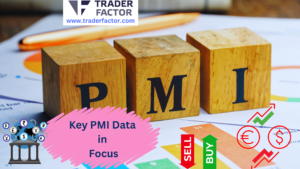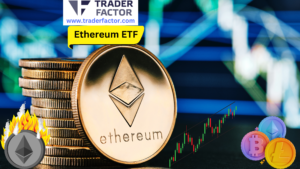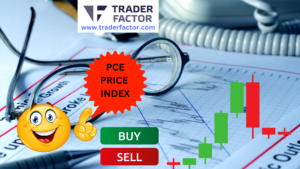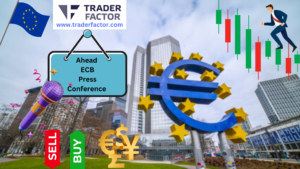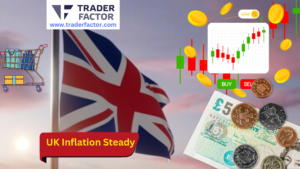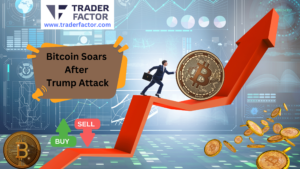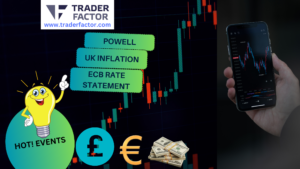Given the ongoing pressure on the US Dollar, investors keenly await the approaching FOMC meeting for any indicators about the future of interest rates.
The EUR/USD pair has skyrocketed to its highest point since March 2022, breezing past that significant mark of 1.1100.
And you know what fueled this phenomenal surge?
Surprisingly mild US inflation figures for June, which made the US dollar lose its strength and give a massive boost to the EUR/USD pair.
At this moment, the pair is trading around 1.11169, and, it has been on a remarkable winning streak of five days. Take a gander at the daily chart, and you’ll see that every one country those technical indicators are glowing with optimism.
It’s looking like we can expect even higher food prices, falling other prices, and energy prices and more gains in the near future.
Check out the 20 Simple Moving Average (SMA) showing a bullish trend below the current level but higher than those longer SMAs. The short-term momentum is still going strong; that’s what the 4-hour chart tells us.
Those technical indicators are confidently pointing upward, with no signs of a potential U-turn. And guess what? EUR/USD is comfortably above all its moving averages, finding dynamic support near 1.0980 from that trusty 20 SMA.
Let’s not forget about those key levels. Keep an eye out for the support levels at 1.1025, 1.0980, and 1.0930, while the resistance levels to note are 1.1100, 1.1140, and 1.1185.
US Dollar Plunges as Inflation Eases and Wall Street Triumphs
Inflation in the United States slows as food and energy prices go down, causing a noticeable drop in inflation rates as food prices rise the price increases the value of the US Dollar. The most recent data reveals that the Consumer Price Index (CPI) only rose by 0.2% in June, below the expected 0.3%.
The yearly inflation rate falls out of deflation also declines, falling to 3%, hitting its lowest point of inflation rate of deflation since March 2021. Consequently, the US Dollar Index plummets to its lowest level in a year, marking five consecutive days of decline. Furthermore, US yields suffer a substantial decrease after the release of the inflation report.
While market participants initially predicted a rate hike at the upcoming July Federal Open Market Committee (FOMC) meeting, many economists say the probability of another rate hike by the end of the year substantially decreases following the latest inflation figures.
Nonetheless, Wall Street continues to see prices soar, and the EUR/USD pair experiences a surge of over a hundred pips, achieving its highest level in over a while following table hundred last year.
Canadian Dollar Surges as BoC Raises Interest Rates
The Bank of Canada made a bold move by raising interest rates by 0.25% at its July meeting. This decision was driven by concerns over persistent core inflation, a measure of consumer prices, inflation which has been running higher than expected since last September.
Governor Tiff Macklem stressed that the Bank’s actions are dependent on data, and the data from previous rate hikes are yet to show their impact.
While inflation remains a challenge, the central bank and governing council considered keeping rates unchanged last year before ultimately deciding to raise them.
The decision to increase rates came after the release of critical US Consumer Price Index (CPI) data for June, which ended up falling and weakening the US Dollar. The CPI inflation numbers were slightly lower than economists anticipated, pointing to a slowdown in annual inflation rate.
Looking forward, analysts anticipate a less favorable second half of 2023 as the Bank of Canada proceeds cautiously with interest rate adjustments.
Moreover, a global economic slowdown is expected to impact commodity prices and energy demand, and energy, and have a negative effect on Canada’s terms of trade in resources and energy itself.
All in all, the Canadian Dollar’s surge and the interest rate hike by the BoC highlight the central bank’s dedication to addressing inflation concerns and ensuring price stability.
How Inflation and Interest Rates Impact Currencies
Inflation and interest rates are two important factors in the economy economics and monetary policy that affect both inflation rate or consumer price inflation expectations and the value of a currency at inflation rates.
Understanding the relationship between these two concepts is critical for anyone looking to invest in currency markets or trade forex.
What is Inflation?
Inflation in economics refers to the increase in the prices and costs of goods and services over time or inflation. When inflation occurs in economy, the purchasing power of consumers’ money in economy decreases, reducing inflation meaning that consumers can buy fewer goods and services with the same amount of money.
What are Interest Rates?
Interest rates refer to the cost of borrowing money. When individuals or businesses borrow money from banks, for mortgage, they must pay interest on the loan. Interest rates on mortgages also affect savings accounts, as individuals receive interest on their savings deposits.
The Relationship Between Inflation and Interest Rates
There is a direct relationship between annual inflation rate and interest rates. When the inflation rate rises, central banks often increase interest rates to slow down economic growth and reduce the overall demand for credit for goods and services at higher prices. By the money supply and making borrowing more expensive, higher interest rates can help to reduce inflationary pressures in the economy.
On the other hand, when the inflation rate is low and wages are, central banks may lower interest rates to stimulate economic growth. Lower interest rates make it cheaper cost for businesses and less cost for individuals to borrow money, and wages are below inflation rates which can encourage spending and investment.
Fiat Currency vs. Commodity Currency
A fiat currency is a currency that is not backed by a physical commodity, such as gold or silver. Instead, its value is derived from the trust that people have in government and in the government that issues the currency. A commodity currency, on the other hand, is a currency that is backed by a physical commodity, such as gold or oil.
Central Banks and Interest Rates
Central banks play a major role in controlling inflation through the use of interest rates. For example, the Federal Reserve in the United States raises interest rates when inflation is at high levels to slow down the the economy’s production capacity and reduce inflationary pressures. Similarly, central banks around the world can use interest rates to control their inflation rates and promote economic growth.
Investing in an Inflationary Environment
Investors can hedge against inflation by investing in assets that tend to perform well in an inflationary environment. These might include commodities like gold or silver, as well as real estate and stocks in companies that produce necessities for the economy and consumers, like food and energy.
Investing in a High Interest Rate Environment
In a high interest rate environment, investors with cash may want to consider investments that offer higher returns, such as high-yield bonds or dividend-paying stocks. Alternatively, they may want to consider investments in countries with high interest rates, many countries which can offer attractive returns on their investments.
Takeaways
Inflation can erode the value of fixed income investments, such as bonds, because the interest payments that they offer may not keep pace with rising prices. To hedge against this risk, investors may want to consider inflation-protected securities, such as TIPS (Treasury Inflation-Protected Securities), which provide returns that are adjusted for inflation.
Inflation can also lead to higher commodity prices, as the cost of producing and transporting goods increases. Some investors may choose to invest in commodities like gold and silver, which have historically served as a store of value during times of inflation.
High interest rates can make it more expensive for companies to borrow money, which can lead to lower profits and a decrease in stock prices. However, some sectors, such as financials, may benefit from higher interest rates because they can earn more money on their loans and investments.
When interest rates are low, investors may turn to dividend-paying stocks for income. However, when interest rates rise, the yield on these stocks may become less attractive, causing their prices to decline. Investors may want to consider investing in sectors that tend to perform well in rising rate environments, such as utilities and consumer staples.
The relationship between inflation and interest rates can be complex and dependent on a variety of economic factors. For example, during periods of economic growth, inflation may rise even as interest rates increase, as consumers and businesses increase spending and demand for goods and services outpaces supply.
Understanding the relationship between the core, inflation rate, front rate and interest rates is critical for anyone looking to invest in currency markets or trade forex. Central banks play a major role in controlling inflation through the use of interest rates, and investors can hedge against inflation by investing in assets that tend to perform well in an inflationary environment. Additionally, in a high interest rate environment, investors may want to consider investments that offer higher returns, such as high-yield bonds or dividend-paying stocks.
Disclaimer:
All information has been prepared by TraderFactor or partners. The information does not contain a record of TraderFactor or partner’s prices or an offer of or solicitation for a transaction in any financial instrument. No representation or warranty is given as to the accuracy or completeness of this information. Any material provided does not have regard to the specific investment objective and financial situation of any person who may read it. Past performance is not a reliable indicator of future performance.
Author
-

Zahari Rangelov is an experienced professional Forex trader and trading mentor with knowledge in technical and fundamental analysis, medium-term trading strategies, risk management and diversification. He has been involved in the foreign exchange markets since 2005, when he opened his first live account in 2007. Currently, Zahari is the Head of Sales & Business Development at TraderFactor's London branch. He provides lectures during webinars and seminars for traders on topics such as; Psychology of market participants’ moods, Investments & speculation with different financial instruments and Automated Expert Advisors & signal providers. Zahari’s success lies in his application of research-backed techniques and practices that have helped him become a successful forex trader, a mentor to many traders, and a respected authority figure within the trading community.
View all posts











